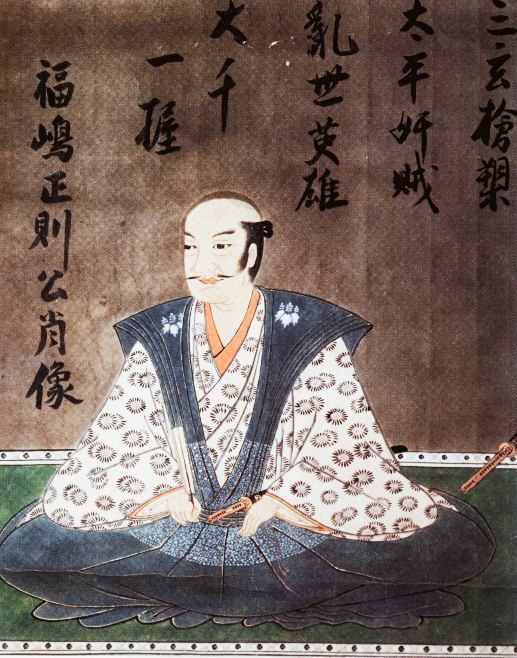Fukushima Masanori (1561 – August 26, 1624), whose name was originally Ichimatsu, was born in Owari Province.
Fukushima Masanori, one of the Seven Spears of Shizugatake
Author: SaiKaiAngel

photo credit: wikipedia.org
Son of Fukushima Masanobu, Fukushima Masanori was a Japanese general and daimyō in the service of the Tokugawa, also famous for being one of the Seven Spears of Shizugatake. It is also said that he may have been a cousin of Toyotomi Hideyoshi. Masanori stormed Miki Castle in Harima Province and, during the Battle of Shizugatake in 1583, defeated Haigo Gozaemon and had the honour of taking the first head, that of the enemy general Ogasato Ieyoshi.
Fukushima Masanori took part in many of Hideyoshi’s campaigns; it was after the Kyūshū campaign (1586-1587) that he became daimyō, receiving the fief of Imabari in Iyo province; shortly afterwards he took part in the Japanese invasions of Korea (1592-1598) and distinguished himself once more during the Battle of Chungju.
Following his involvement in the Korean campaign, Masanori was involved in the search for Toyotomi Hidetsugu. He led 10,000 men in 1595, surrounded the Seiganji temple on Mount Kōya and waited for Hidetsugu to commit suicide. On Hidetsugu’s death, Masanori received Hidetsugu’s former fief of Kiyosu in Owari province.
Being hostile to Ishida Mitsunari, Fukushima Masanori came into sympathy with Tokugawa Ieyasu; Ishida burned Masanori’s castle on a pretext and during the Battle of Sekigahara launched the first attack on Ukita’s troops, remaining in the front line throughout. Having won the battle and captured Ishida, Masanori beheaded the enemy daimyō in Kyoto along with Anko and Konishi. Masanori received the fief of Hiroshima in Aki, but Ieyasu never fully trusted Masanori, so he ordered him to rebuild the Nagoya castle so that he could spend some of his income.
At that point, Masanori asked to take part in the siege of Osaka (1614-15), but was forced to remain in Edo. The new Shōgun, Hidetada, trusted Masanori even less and, after Ieyasu’s death, accused him of misrule and transferred him to the fief of Kawanakajima. Fukushima Masanori’s younger brother Masayori had already been deprived of his fief at Yamato in 1615.

Il posto di comando di Fukushima Masanori a Sekigahara
photo credit: samurai-world.com
It seems that his descendants became hatamoto in the service of the Tokugawa shogunate. The hatamoto were samurai under the direct control of the Tokugawa Shogunate in feudal Japan. All three shogunates in Japanese history had direct contacts, only in earlier shogunates they were called gokenin. However, in the Edo period, the hatamoto were the senior vassals of the Tokugawa dynasty and the gokenin were the junior vassals.
Fukushima Masanori owned one of the three great spears of Japan: Nihongo, or also called Nippongo (日本号). Used in the Imperial Palace, the Nihongo was later owned by Masanori Fukushima, and then passed into the hands of Tahei Mori. It was recovered, restored and is now in The Fukuoka City Museum.
Share this:
- Click to share on Facebook (Opens in new window)
- Click to share on Twitter (Opens in new window)
- Click to share on Tumblr (Opens in new window)
- Click to share on Pinterest (Opens in new window)
- Click to share on Telegram (Opens in new window)
- Click to share on WhatsApp (Opens in new window)
- Click to share on Reddit (Opens in new window)
- Click to print (Opens in new window)






